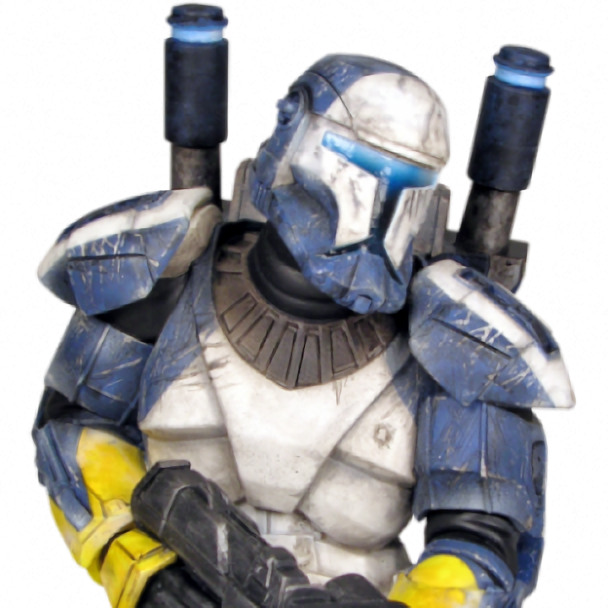This isn’t me asking for help or anything, I already replaced it with fedora kinoite. I just felt like talking about this ridiculous venture of mine.
So a couple weeks ago I started hyper focusing on cities skylines, but played on my Xbox. I learned that mods and all kinds of fun custom content was available on PC so I tried to play on my system. Problem, my laptop has an rtx 2070, but I was running fedora kinoite and couldn’t figure out how in the world to install nvidia drivers.
So after a bunch of searching around I give up and decide to try installing a “gaming” focused distro in the form of endeavour os. It was awful.
Maybe I am weird but the x11 rendering didn’t feel good at all, the lack of some default applications, as well as a bunch of apps I didn’t know the purpose of. (This one is my own fault since they have a kde spin, but I remembered why I didn’t like gnome) and finally today it froze in the middle of an update and hard rebooted, no longer able to launch.
Worst part, I didn’t do a lick of gaming on the thing cause I moved on to Borderlands 3
EndeavourOS isn’t a gaming distro it’s just an Arch installer with some defaults. It’s still Arch and comes with Arch’s woes. It’s not a beginner friendly just works kind of distro.
Coming from kionite, you’d probably want Bazzite if you want a gaming distro: it’s also Fedora atomic with all the gaming stuff added.
Yeah that’s why I put it in quotes, it just kept popping up when I searched for distros more inclined towards gaming lol.
Yeah I didn’t know about bazzite before going about this whole thing, but I am not going to try gaming on my system until nvk becomes more capable. Even then only light work.
I’m not necessarily a begginer as I have been using Linux for a few years now, but arch is definitely out of my wheelhouse
You can also get used to Arch over years until you find yourself editing kernel code directly and fixing the drivers by yourself
In theory, Kinoite is just the KDE spin of Bazzite (or the other way around, lol).
Stick with the beaten path. Ignore the people who confidently tell you to use anything new or obscure.
Fedora Workstation, Linux mint or Pop os is what you want
I’ve had good luck striking out on a new path with Nobara after years of only ever using Ubuntu. There was a bit of a learning curve (and I still haven’t gotten everything I wanted to work the way it did before), but I mostly got it figured out.
But that may well be a Survivor case in the sense of Survivor Bias, no idea how many people tried and decided “wasn’t worth it”.
I did have a bone to pick with pipewire because my old pulseaudio config no longer worked and I had difficulties figuring out just how to redo it in pw, but that’s probably not distro-specific.
This is the voice of reason. Good to see there are some reasonable people still out there.
This makes a lot of sense, though I can’t help but think about the fact that all these distros were once brand new projects that people had to go out on a limb and try out before they became what they are today.
Though I also guess these projects had more official dedicated support.
In any case, I won’t be the one going out on a limb for a while now lmao
Using Linux was going out on a limb for a long time. Now it has matured enough to be stable without to much knowledge or work.
Potentially SteamOS might be an option for you if you are wanting a gaming oriented distro. I believe you can boot it into desktop mode and it ships with KDE.
Anyone who tells you that gaming on Linux isn’t somewhat experimental is lying. I think it’s getting there, though.
I mean, OPs distro choice didn’t help here:
EndeavourOS is an Arch-based distro that provides an Arch experience without the hassle of installing it manually for x86_64 machines. After installation, you’re provided with a lightweight and almost bare-bones environment ready to be explored with your terminal, along with our home-built Welcome App as a powerful guide to help you along.
If you want Arch with actual training wheels you probably want Manjaro or at least a SteamOS fork like Chimera/HoloISO.
It probably would have been much smoother with an actual beginner friendly distro like Nobara and Bazzite, or possibly Mint/Pop for a more classic desktop experience.
It’s not perfect and still has woes but OP fell for Arch with a fancy graphical installer, it still comes with the expectation of the user being able to maintain an Arch install.
I just updated gdm-prime on Manjaro to 46.0, when gnome shell is 45.6, and now gdm keeps crashing on startup.
gnome-shell is at 46.1. Also, gdm-prime is AUR so it’s not supported.
This is one of those problems that Manjaro fans on Lemmy keep telling me are impossible.
I am on EndeavourOS and gnome-shell is on 46.1-2. gdm-prime is on 46.0-1. Everything would work fine using gdm-prime from the AUR.
The issue is that Manjaro holds back the packages in core and extra for weeks but the packages in the AUR are up-to-date ( and expect the version numbers found in Arch ). So you have this incompatibility.
You may find a newer version of gnome-shell in the AUR but, if you do, you may find that the Manjaro package never catches up and you are stuck with an AUR version forever, or worse, end up with packages that cannot be upgraded one the one in the AUR gets abandoned.
In my opinion, using Manjaro is “hard mode” much more than EndeavourOS is for exactly these kinds of reasons.
Yeah, OP definitely played hard mode lol
PopOS has an ISO with Nvidia drivers included, no issues gaming straight away on my old 1080ti. As I’m a simpleton who just likes their system to with I’ve stuck with it even after upgrading to an AMD card
The UI xan be buggy and and pop shop is a resource hog but other than that it is fine.
I previously used Nobara but recently switched to Bazzite. I think you can give either of these two a shot. I recall Nobara includes a one button install of nvidia drivers. Not too sure about Bazzite since I have an AMD gpu.
Both these distros are gaming focused. Only difference is Nobara is a traditional distro while Bazzite is atomic desktop based.
What is atomic desktop, roughly? Google doesn’t give me a concise answer and I prefer not opening news blogs that give me an entire article on my limited mobile data plan.
The name “atomic” in the context of operating systems refers to an operation in which all steps are applied without interruption (for instance, atomic operations like locking a file cannot be stopped by system interrupts, and once started are ran to completion regardless of the scheduler). Atomic operating systems take that concept, and apply it to base operating system updates. All changes to the operating system are applied simultaneously without interruption. The methods that different operating systems use for this vary, but since we’re talking about Fedora, I’ll explain Fedora’s image based atomic model using
rpm-ostree.Fedora Atomic is based on an image of the root filesystem that is perfectly consistent across all installs. When you update your system (with
rpm-ostree), you fetch the entire root image from the repo instead of fetching individual packages. Updating works similarly to version control software like Git, where each version has a list of changes from the previous one, branches, and a variety of other similar features like rebasing. The operating system essentially runs similarly to a Git repository.rpm-ostreepulls the latest image from the image repository, and creates a new local branch on your system with all the changes in it. The root filesystem covered by the image is immutable (which means it is read-only and cannot be changed), to ensure that the root image is always perfectly consistent with the image from the repo (everything is perfectly reproducible). In order to switch to the new branch, you must reboot into it. This ensures that nothing changes while updating, and since the whole root filesystem is immutable, it’s best for stability to load into the new branch through a reboot (to ensure all behavior is consistent). Technically, you can apply changes live, but it is not recommended to do that and requires you to use an additional flag with therpm-ostreecommand. This ensures that, in practice, your system is never in a state “between” updates. Once an update starts, it will finish to completion (or it will fail and the update won’t be applied), making updating an atomic operation (an update runs to completion, or it essentially doesn’t run at all; nothing in between). This is a great safeguard against crashes or power losses during updates.The benefit of atomic distros is that all installations have a perfectly consistent root filesystem, so the system can be tested by the developers in the exact configuration in which it will be deployed to the end user. Any packages you want to install on top of the root filesystem can be installed in a few ways. Most GUI apps should be installed as Flatpaks where possible (installed to the home folder, which is read-write, so you can do it without rebooting), terminal apps can be installed in a toolbox (a default containerization system installed in Fedora that allows you to emulate a read-write root filesystem by mounting extra folders inside the container), or you can overlay the packages on top of the root filesystem through
rpm-ostree. Toolbox hasdnfinstalled in it, so you can install packages inside a container as you would install them in non-atomic Fedora. Package overlays download the packages from the Fedora repos, and mount them read only on top of the root filesystem (hence the “overlay”, as the packages are independently mounted over top the root filesystem). Overlays have the highest chance to change the behavior of your system, so they are generally recommended as the last option, since they decrease the benefit of consistent install behaviors, meaning that your extra packages aren’t tested as thoroughly as the root filesystem. In practice, overlays don’t generally cause any more “instability” than installing a package on a non-atomic distro, but again, it slightly diminishes one of the main benefits of atomic distros.Essentially, all updates are applied at reboot, which means that you can just have updates running in the background and keep doing whatever you want, and as soon as you reboot, changes are instantly applied (no “installing” to wait for). Your operating system will keep some amount of previous branches (usually the current branch and 2 or 3 most recent branches) so you can boot into a previous branch if an update breaks anything without having to restore from a backup. You can then rebase into the previous branch (make the image of the branch you selected your current root image) once you can be sure that everything works properly. You can also rebase into another image entirely at any time (from Fedora Atomic GNOME to Fedora Atomic KDE, or into Bazzite or Aurora for example). The root image will change, but all of your overlays and persistent data will stay.
Atomic operating systems are emerging as a great option for desktops, as they increase stability, reliability, and recoverability greatly over the traditional model.
Wow, what a very detailed response. I’ve only been using Bazzite for about two weeks and still learning about it. Now I have a slightly better understanding of how it all works. 👍
I asked for a rough description because I didn’t wanna bother anyone to take the time for a full, detailed explanation…
…then you come along and write a whole article on it that’s most certainly more informative and useful than anything Google would have spat out.
I love that. Thanks so much for taking the time. I also think I’ll give Bazzite / Fedora Atomic a shot. The idea of simply rebasing onto a different option to try different things is definitely appealing.
Atomic means the core OS packages are in an immutable container such that none of its individual components can be updated separately; instead the entire container is replaced with a newer version when the system is updated. This makes it much less likely for something to break during normal use, and easier to rollback updates if something does happen to break. The ideal use case is a containerized environment where each app you use is installed in its own container, like Docker, or is otherwise self-contained such as flatpak installers, and doesn’t rely on any of the system’s packages.
Thanks for the explanation! I think I’ll give that a try. I’ve got a spare disk, might slap some Bazzite on there, see if it works for me.
Both are semi obscure and aren’t as well proven. Don’t recommend new users leave the beaten path.
Bazzite offers a variant with Nvidia drivers already baked in too.
You don’t have to reinstall anything btw, you can just rebase from Kinoite to Bazzite with
rpm-ostree rebase *link to Bazzite*. (You find the instructions on the website).It takes about 5 minutes and you can keep all your configs and data, including Flatpaks, pictures and WiFi password. And if you don’t like it, you can revert that or rebase to some other variant, e.g. Aurora, the Sway spin, or whatever. I find it pretty neat.
Feels good to know that with my dedicated /home partition I can re-install my OS in about an hour. So the very notion of “system” feels strange to me, I mean I feel no attachment to it.
PS: yes I have NixOS install on my slow HD but still didn’t take the plunge. I imagine it “feels” even better to have “it” declarative.
If you find yourself wanting to game on your distro again, layering nvidia drivers ontop of immutable fedora is do-able. If you want a more hands off approach you can use bazzite (https://bazzite.gg/), which has an nvidia compatible version and is just a kinoite-based OSI image with gaming oriented tweaks and extra apps.
You can even just rebase to it if you’re already using kinoite (and rebase back to kinoite if you don’t like it), no need to reinstall your system. The download page has a one-command exemple on how to do that.
Rebasing is easily one of the coolest features of the atomic suite. I will definitely look into bazzite more in the future, just wish I knew about it before all this lmao
Bazzite also has a lot of extra gaming-oriented changes to Fedora, such as including the System76 scheduler, which can increase performance in games. Since Bazzite has versions with Nvidia drivers in the root image, it makes it easier to use Nvidia cards.
By the way, if you hadn’t figured out the install for Nvidia drivers in Kinoite, here is a simple guide for how to do it. Also, there is documentation from the RPM fusion repo on how to install the drivers, which you can find here (that’s where the commands from the article came from). There are more details elsewhere in the documentation if you need them, such as how to get the Nvidia drivers to work with Secure Boot on atomic distros (though I’d recommend just using Bazzite for that because it can be a pain to get working manually).
I reckon if I go about trying to game again I will just go ahead and rebase to bazzite. Seems the easiest route
If you want something like Fedora that supports nVidia, just run OpenSuSE. It’s also enterprise grade and happily chugs along whatever you do to it.











